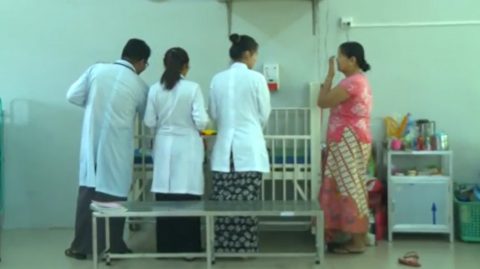
An outbreak of H1N1 in Myanmar has now killed 27 as the government is starting to step up public awareness campaigns about the swine flu virus.
Since the H1N1 outbreak started on July 21, 277 of 725 respiratory infection patients have been diagnosed as H1N1 influenza A virus victims across the entirety of Myanmar. Among the 277, 27 people have died, and the number of infected patients is increasing, the latest statistics from the country’s Ministry of Health and Sports showed.
The H1N1 influenza A virus has been reported in 12 of the total 14 states, with Rangoon being the most severely affected area.
Facing the widespread infection, residents are worried.
“[I] heard reports that this flu is dangerous to some extent. My community is poor, and there is someone who died from the influenza,” said Mha Hsan Hsan Win, a resident in Rangoon.
“We are worried and more careful now. Different from the past, we are paying more attention to preventative measures,” said Dau Hsu Hsu Min, a resident in Rangoon.
The H1N1 virus that is circulating in Myanmar is different from the previous seasonal pandemic. It contains gene segments of swine flu and bird flu.
As the disease can be transmitted to humans by pigs and birds, residents buy less pork and chicken. As a result, the prices are low.
“Business has suffered a great amount. No buyers, and sales are not good. Those who used to sell chicken only now also sell fish and shrimp to make up their losses,” said Hmai Hmon, a vendor.
Myanmar is taking more measures to prevent the disease and treat patients.
“Currently, all departments around the country are making efforts to fight against the disease, such as providing medicines and aid. Meanwhile, we are spreading knowledge about the disease, by circulating leaflets and giving talks,” said Dr. Win Lwin, head of Yangon Region Public Health Department.
(Courtesy China Central Television)





